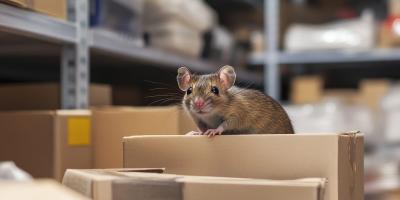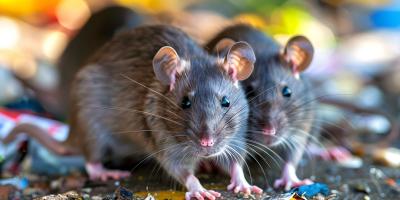4 Tips To Keep Your Restaurant Pest-Free This Fall

With cooler weather at our doorsteps, you may think that your worries about pest issues are no longer a primary concern for your restaurant. That’s not the case, however. In fact, many retail food establishments experience an equal or increased amount of pest activity during fall as they do in warmer months. Many types of insects and other pests start looking for a new place to call home when the temperatures drop, and if you’re not careful, your restaurant might fit the bill. It’s warm and there’s plenty of food available — what better place for mice or a swarm of wasps to settle during the winter? There are several things you can do to decrease and prevent fall pests from turning your restaurant into their personal dining room.
Fall Threats
Restaurants are more susceptible to pests throughout the year simply due to the nature of the restaurant business. The presence of food is a huge attractant to all types of pests, from rodents to roaches, wasps and everything in between. Preventing pests in the fall means utilizing good pest control practices throughout the year and understanding how pests behave when the weather gets cooler.
Fall brings a host of new threats to New England businesses, as pests that are happy living outdoors during the warmer months seek shelter from the coming winter. Two of the most common pests at this time of year are stink bugs and lady beetles (also called ladybugs). Neither of these insects is harmful to you or your patrons, but they tend to congregate in large numbers both inside and outside of structures. Large amounts of these insects will leave behind insect fragments, shed skins and droppings.
Rodents become a larger health threat during the fall when they seek shelter inside businesses, bringing diseases and health risks to your restaurant workers and patrons. Mice and rats are always attracted to restaurants and other retail food establishments simply because of the plentiful and readily available amounts of food. As the weather turns cooler, they have the added incentive of finding somewhere warm to shelter during the winter. Your restaurant offers both an all-you-can-eat buffet and protection for rodents of all types.
1. Check Receiving Areas
One primary entrance point to your restaurant is through the receiving area. You have boxes and crates of food going in and out constantly, which is an ideal location for a wide range of pests to enter the property. Thoroughly inspect all shipments for insects and signs of rodent infestation before moving them to the storage area.
2. Protecting Storage Areas
Your restaurant’s storage areas are an ideal place for pests to camp. They’re generally less trafficked than other areas, and they tend to be dark with the lights only coming if someone’s taking or adding stock.
3. Garbage Bins
Restaurant create a great deal of waste on a daily basis, and it’s found both inside and outside. One good way to limit the number of pests attracted to your establishment is to practice good refuse storage habits. As part of an Integrated Pest Management plan your containers should be sealed and clean on the outside and your floors should be swept regularly for small crumbs. Be sure to mop up all spills immediately, and thoroughly clean up any grease you find.
4. Professional Inspection
One of the most important steps to preventing and successfully treating an existing fall pest issue is to have a full, professional inspection. An experienced pest control provider can inspect the inside and outside of your restaurant, and help you determine the best course of action for an existing problem. This ensures that any potential entryways are sealed off and the pests are kept out.
For help with fall invading pests or other pest management needs, contact JP Pest Services today for a free commercial consultation for your business.



